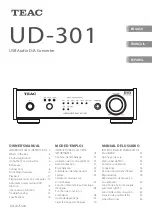
13
REV UP/DOWN (cont)
Locomotive Loading Rev Control
The locomotive power is monitored and filtered according to several CV’s.
through
contain thresholds determining the required locomotive power needed
to increase or decrease the diesel rev level. Once the power level falls above or below
the threshold, the rev level changes.
contains a filter coefficient determining the
convergence time and accuracy in measuring the locomotive’s power.
The locomotive power is substantially higher in DC mode. To compensate, a DC scalar
is provided at
CV200
. This scalar changes the thresholds of
through
altering the power load thresholds providing proper rev changes from power load
changes in DC mode of operation.
The locomotive power is substantially lower for N Gage locomotives. To compensate,
an N Gage scalar is provided at
. This scalar changes the thresholds of
through
, altering the power load thresholds providing proper rev changes from
power load during operation.
Should the desired power thresholds need to be changed, a simple tuning method may
be used. Set
through
all to 255. Now, all power thresholds are disabled.
While running in DCC, change
, lowering it until the rev changes at the desired
power load. Repeat for each of the other six power levels. DC mode will require more
work, since changing while running is not allowed.
Setting bit1 in
will disable locomotive load power control.
Locomotive Throttle Rev Control
The rev levels also change with the throttle. Once the rev up or rev down transition
sound effect finishes playing, the throttle is checked for any change. A rev up sound
effect plays if the throttle change is increased. A rev down sound effect plays if the
throttle change is decreased. The effect is that if the throttle is slowly increased or
decreased, the revs continue to increase or decrease. If the throttle is quickly moved up
or down, the throttle will only change one rev level up or down.














































